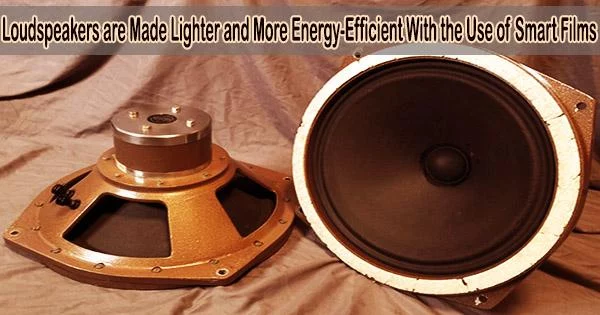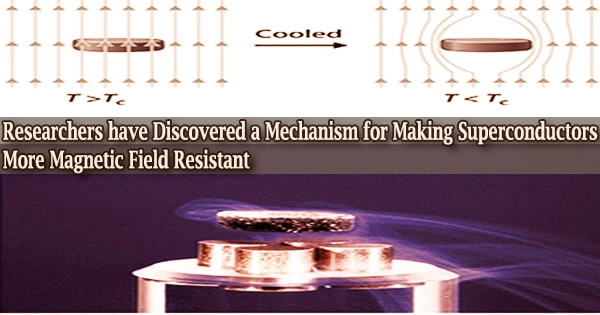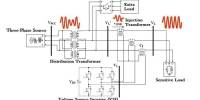At Saarland University, professors Stefan Seelecke and Paul Motzki are creating intelligent materials that are paving the way for new developments in sound reproduction technology, including lightweight loudspeakers that consume significantly less energy than their conventional counterparts, innovative sound and signal generator shapes, and noise-canceling textile applications.
The ultrathin silicone films that can function as artificial muscles with their own built-in sensors are the foundation for these smart materials. The research team will be showcasing their new technology at this year’s Hannover Messe from 17 to 21 April (Hall 2, Stand B34).
Ultrathin films, making speaker systems lighter and more ecologically friendly, may replace the heavy and energy-hungry components used in today’s loudspeakers. And that might lessen the amount of work that stage technicians and roadies have to do when stacking speaker towers in stadiums and concert venues, as well as lower the amount of electricity that millions of homes use.
Public address systems and stage speaker sets frequently use magnetic speaker drivers, which consume a lot of electricity. At large-scale events, power levels frequently exceed the hundreds of thousands of watts range. But power consumption in domestic surround-sound installations (home music or home cinema systems) is also not inconsiderable. Most of us know how quickly a battery-powered (wireless) speaker needs recharging.
But the new technology being developed by Professor Stefan Seelecke and his research team at the Intelligent Material Systems Lab at Saarland University and at ZeMA (Center for Mechatronics and Automation Technology) in Saarbrücken is markedly more energy-efficient. Their invention only requires a silicone film, some carbon black, and a smart control unit; it doesn’t require expensive or hard-to-find components. These brand-new film-based drive technologies open the door to the creation of loudspeakers with completely original forms.
Depending on the application, we can use the film as both a drive system and a sound generator at the same time. We can develop technical solutions with novel shapes and designs that are also incredibly compact, just a few millimetres thick.
Sophie Nalbach
“Our smart material systems made from dielectric elastomers are opening up opportunities to rethink much of what we know in the field of acoustics. These systems could help to make loudspeaker technology more sustainable and to develop it in new directions,” said Professor Stefan Seelecke.
The range of possible applications is very broad. For example, the films could be integrated into wall-mounted textiles to actively cancel ambient noise, or if worn on the body, they could emit acoustic signals.
At this year’s Hannover Messe, the research team from Saarbrücken will be demonstrating their expertise and looking for business and industrial partners to work with on further research and development of the technology for new applications.
In order to develop dielectric elastomers that only require very small amounts of electrical power to function, the technology is based on thin silicone films coated with an electrically conductive layer. The research team can make the elastomer vibrate at high frequency or perform constantly varied flexing motions by changing the applied electric field.
The elastomeric film may be rolled up and utilized as a new kind of speaker driver, taking the place of the bulky, power-hungry electromagnets or permanent magnets that drive loudspeaker membranes while still producing deep bass frequencies.
“A highly flexible carbon black-based electrode layer is printed onto both sides of the silicone film,” explained Professor Paul Motzki, who carried out research in this field as a post-doctoral researcher in Seelecke’s team.
“If we apply a voltage to the elastomer, the electrodes attract each other, compressing the polymer and causing it to expand out sideways, thus increasing its surface area,” said Motzki, who now holds a cross-institutional professorship in smart material systems for innovative production at Saarland University and at ZeMA, where he heads the research area ‘Smart Material Systems.’
The polymer films have also been referred to as artificial muscles because of the way they contract. And every time they change shape, so too does the electrical capacitance of the film. Each capacitance value corresponds to a specific position of the film. The film essentially becomes its own sensor.
The researchers can construct incredibly quick motion sequences and precisely regulate the behavior of the elastomer film by combining the measurement data with clever algorithms. The researchers may change the applied electric field to cause the film to oscillate, bend, or pulse at a specific frequency.
The elastomeric film can be made to produce individual acoustic tones or even several tones by superimposing different vibrational frequencies, making it into a loudspeaker all by itself.
“Depending on the application, we can use the film as both a drive system and a sound generator at the same time. We can develop technical solutions with novel shapes and designs that are also incredibly compact, just a few millimetres thick,” explained Sophie Nalbach, who worked on smart films as part of her doctoral dissertation work in Professor Seelecke’s group and is now a group leader in the ‘Smart Material Systems’ research area at ZeMA. The films could definitely be combined into fabrics that could then transmit acoustic warning signals, even though they do not displace enough air to match the performance of today’s conventional loudspeakers.
Background:
Several PhD research programs have examined and created the technologies we’ve been talking about. The results have been published as papers in a variety of scientific journals. The research work has also received support from numerous sources.
For example, the Saarland state government provided financial support through the BEAT project, a collaborative project with the Saarland-based company Stamer GmbH, and through the ERDF (European Regional Development Fund) project iSMAT. EU funding was provided through a Marie Curie research fellowship.
In order to develop these film-based drive systems for a variety of applications, including ways to connect them so they can communicate and work together as a team, Professor Seelecke’s team is now engaged in a number of different research initiatives. In order to achieve this, researchers will need to give surfaces and interfaces new capabilities, which calls for further shrinking of the technology.
To make it easier to translate the findings of their application-driven research into business and industrial applications, Professor Seelecke’s division spun off the company ‘mateligent GmbH.’
















